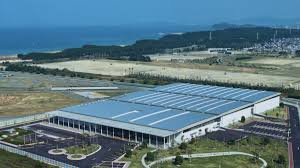
Breaking News
 New Study Obliterates the "Millions Saved" COVID Shot Myth
New Study Obliterates the "Millions Saved" COVID Shot Myth
 The Meltdowns Over Jimmy Kimmel Show Pulled from Air by ABC
The Meltdowns Over Jimmy Kimmel Show Pulled from Air by ABC
 Mike Rowe: This is HUGE story, and it's not being covered
Mike Rowe: This is HUGE story, and it's not being covered
Top Tech News
 This "Printed" House Is Stronger Than You Think
This "Printed" House Is Stronger Than You Think
 Top Developers Increasingly Warn That AI Coding Produces Flaws And Risks
Top Developers Increasingly Warn That AI Coding Produces Flaws And Risks
 We finally integrated the tiny brains with computers and AI
We finally integrated the tiny brains with computers and AI
 Stylish Prefab Home Can Be 'Dropped' into Flooded Areas or Anywhere Housing is Needed
Stylish Prefab Home Can Be 'Dropped' into Flooded Areas or Anywhere Housing is Needed
 Energy Secretary Expects Fusion to Power the World in 8-15 Years
Energy Secretary Expects Fusion to Power the World in 8-15 Years
 ORNL tackles control challenges of nuclear rocket engines
ORNL tackles control challenges of nuclear rocket engines
 Tesla Megapack Keynote LIVE - TESLA is Making Transformers !!
Tesla Megapack Keynote LIVE - TESLA is Making Transformers !!
 Methylene chloride (CH2Cl?) and acetone (C?H?O) create a powerful paint remover...
Methylene chloride (CH2Cl?) and acetone (C?H?O) create a powerful paint remover...
 Engineer Builds His Own X-Ray After Hospital Charges Him $69K
Engineer Builds His Own X-Ray After Hospital Charges Him $69K
 Researchers create 2D nanomaterials with up to nine metals for extreme conditions
Researchers create 2D nanomaterials with up to nine metals for extreme conditions
Electricity through osmosis: Japan opens landmark osmotic power plant

This is the quiet promise of osmotic energy, a renewable energy source generated where river meets ocean. The idea has been around for decades, but only now is it flowing into real-world use.
The principle behind osmotic potential is deceptively simple. When fresh and salt water are separated by a semi-permeable membrane, water molecules naturally move across the barrier to balance the difference. That flow builds up pressure strong enough to spin a turbine. No combustion, no emissions. And unlike wind or solar, there is no dependence on weather or daylight, making it capable of running continuously.
The first real push came in 2009, when the Norwegian company Statkraft built one of the world's first prototype osmotic power plants. The four-kilowatt demonstration model proved the concept could generate electricity, but due to costs the technology mostly lingered in labs and small pilots.
Now, for only the second time since development of those prototypes, a full-scale facility has opened in Fukuoka, Japan. Built by a consortium including the National Institute for Materials Science and local partners, it's the world's second osmotic power facility designed for continuous output following the launch of another plant in Denmark in 2023. While considered modest in scale, it will generate around 880,000 kilowatt-hours per year – enough to power 220 households or offset the energy needs of a desalination plant.
What sets the Fukuoka facility apart from any prior iterations of the technology is not the amount of energy it generates, but how it applies physics to infrastructure. By pairing with a desalination plant, it taps into concentrated brine waste that would otherwise be discarded, creating a sharper salinity contrast than rivers naturally provide. Those stronger gradients boost efficiency and grounds osmotic generation in existing systems rather than the lab.
Still, hurdles remain. Pumping losses and membrane fouling can erode efficiency, and advanced membranes are expensive.
"While energy is released when the salt water is mixed with fresh water, a lot of energy is lost in pumping the two streams into the power plant and from the frictional loss across the membranes," said Professor Sandra Kentish of the University of Melbourne in a recent interview with The Guardian. "This means that the net energy that can be gained is small."

 The Moral Decay of Debt
The Moral Decay of Debt

